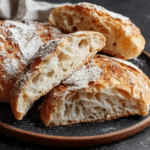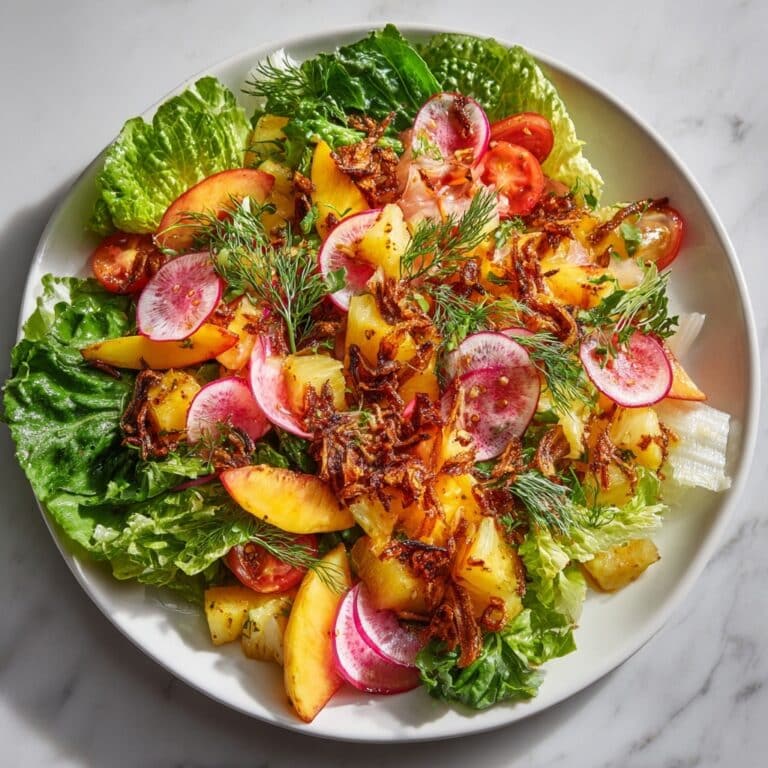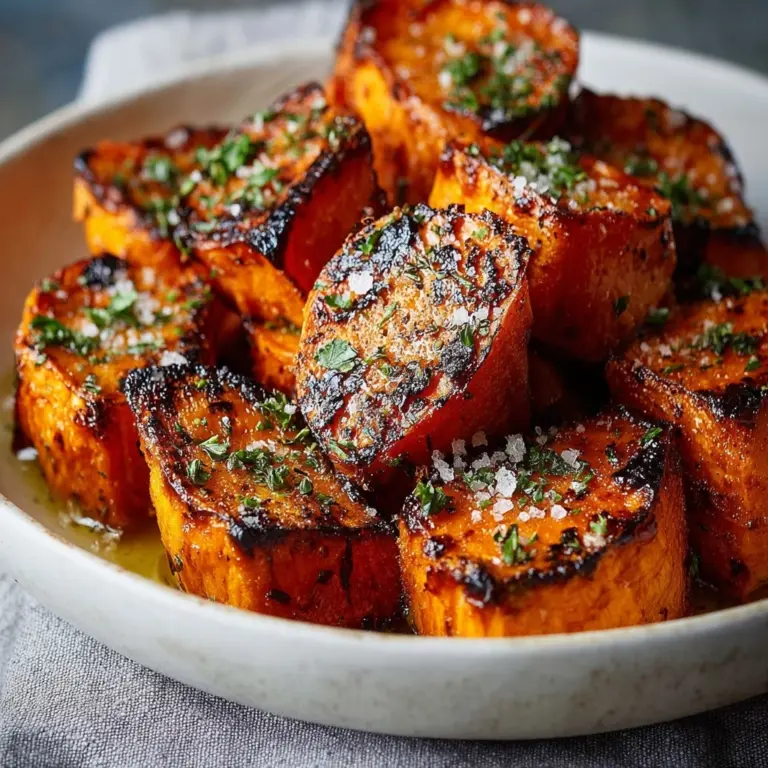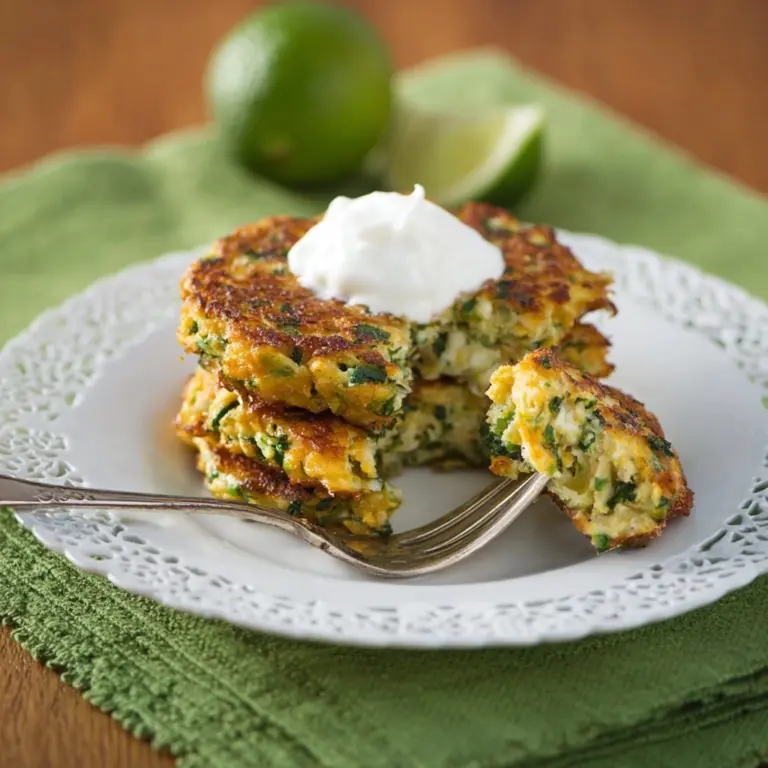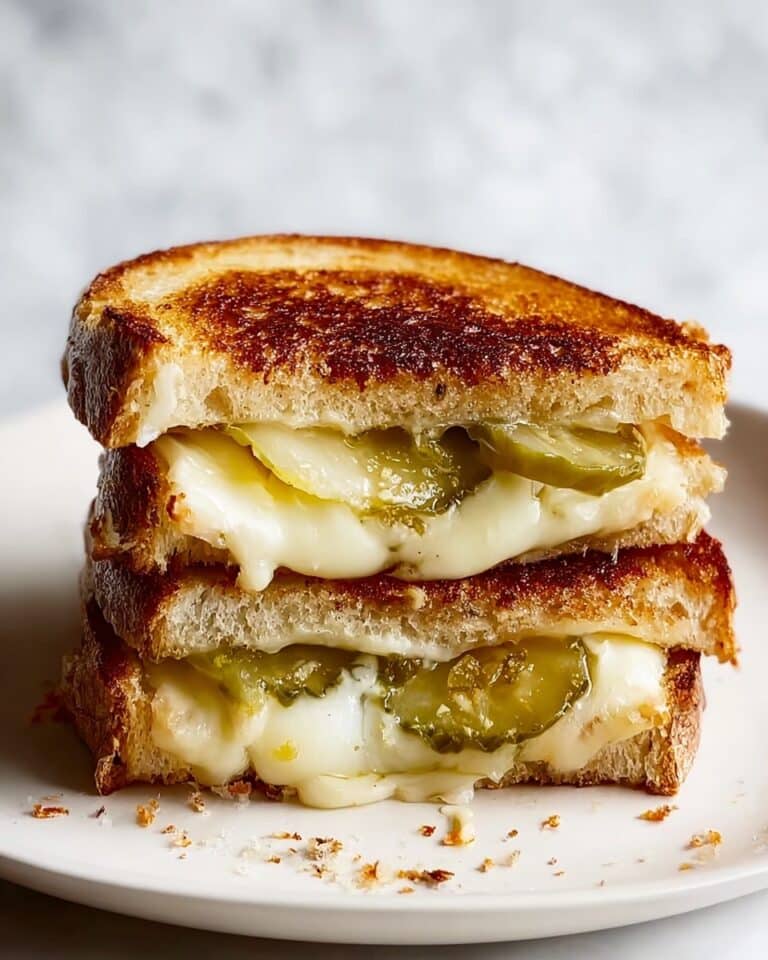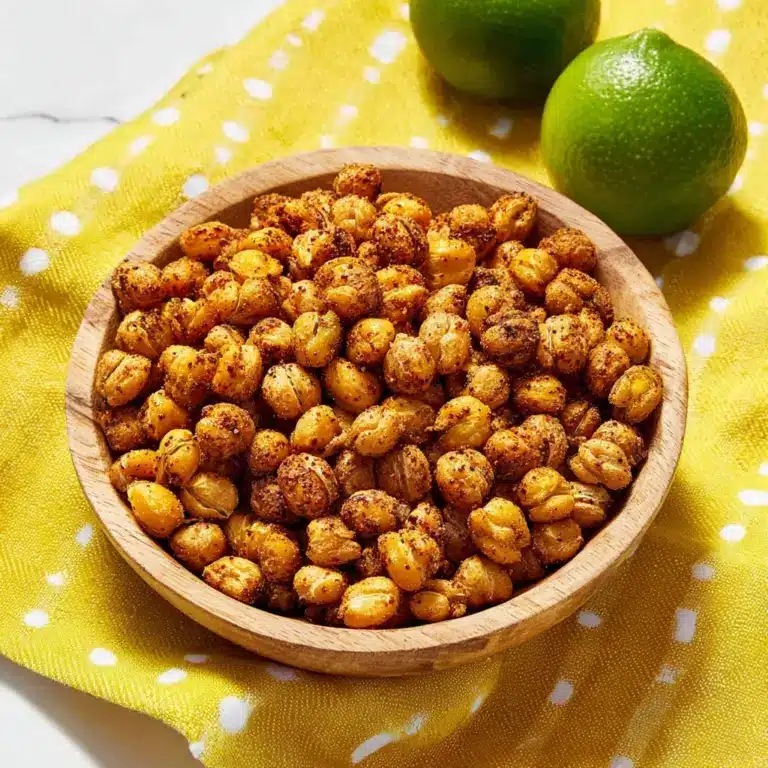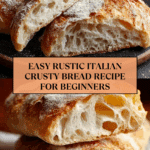Rustic Italian Crusty Bread Recipe
If you have ever craved the warm, satisfying aroma of fresh bread wafting through your kitchen, then this Rustic Italian Crusty Bread recipe is just what you need. It captures the heart of traditional Italian baking with a beautifully golden, crackling crust and a tender, chewy interior that’s perfect for any meal. This loaf combines simple, everyday ingredients with straightforward steps that culminate in a bread so delightful, you’ll want to share it with everyone you know. Whether it’s for a casual dinner or an elegant spread, Rustic Italian Crusty Bread brings that authentic touch of Italy right into your home.
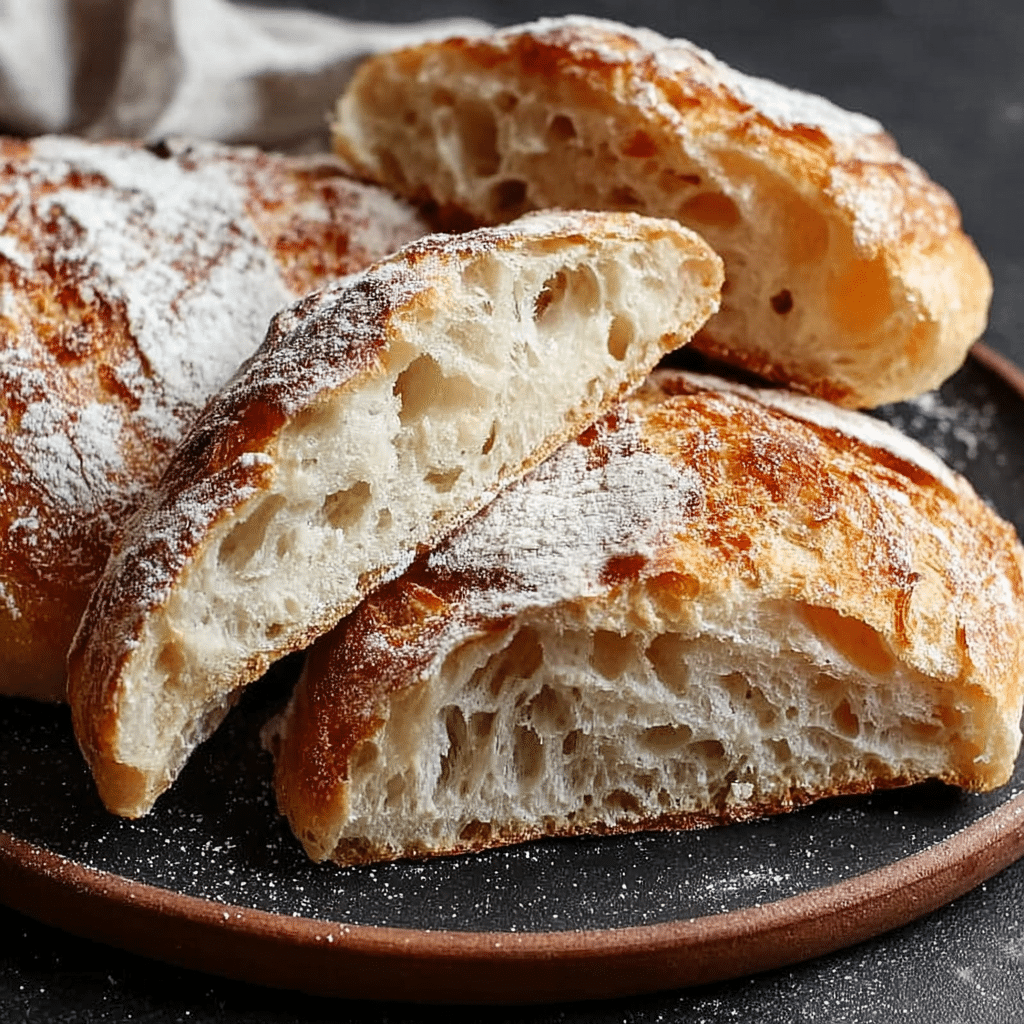
Ingredients You’ll Need
With just a handful of staple ingredients, each plays a vital role in making this Rustic Italian Crusty Bread shine. From the flour that provides structure, to the yeast that breathes life into the dough, every component is essential for achieving that perfect texture and flavor.
- 3 1/2 cups all-purpose or bread flour: Provides the sturdy base that gives the bread its structure and chewy crumb.
- 1 1/2 tsp salt: Enhances all the flavors and tightens the gluten network for better texture.
- 1 tsp sugar: Feeds the yeast to kickstart the fermentation process, promoting a good rise.
- 1 packet (2 1/4 tsp) instant yeast: The magic ingredient that causes the dough to rise and develop its airy interior.
- 1 1/4 cups warm water (110°F to 115°F): Just warm enough to activate the yeast without killing it, ensuring a perfect rise.
How to Make Rustic Italian Crusty Bread
Step 1: Activate the Yeast
Begin by combining warm water, sugar, and instant yeast in a small bowl. Watch closely for 5 to 10 minutes until the mixture becomes delightfully foamy—this signals that your yeast is active and ready to work its magic in the dough.
Step 2: Mix the Dough
In a large bowl, stir together the flour and salt. Pour in your yeast mixture and mix with a wooden spoon until a shaggy, somewhat sticky dough forms. This initial texture might look rough, but it’s the perfect prelude to kneading.
Step 3: Knead the Dough
Turn the dough onto a lightly floured surface and knead by hand for about 8 to 10 minutes until you achieve a smooth, elastic consistency. If you’re a fan of gadgets, a stand mixer fitted with a dough hook can speed this process up, kneading in just 5 to 6 minutes.
Step 4: First Rise
Place your dough in a large bowl lightly coated with oil. Cover it with a clean kitchen towel and let it rest in a warm spot. Over the next 1 to 2 hours, you’ll watch it double in size—a clear sign that your yeast is hard at work, creating those lovely air pockets that make crusty bread so irresistible.
Step 5: Shape the Loaf
Gently punch down the dough to release excess air, then shape it into a round loaf. For ease of handling, place the shaped dough on parchment paper. This step sets the stage for the rustic look and perfect shape of your bread.
Step 6: Second Rise
Cover the shaped loaf with a kitchen towel and let it rise again for 30 to 45 minutes while you preheat your oven to 450°F. If you have a Dutch oven or a baking stone, place it in the oven now to get it piping hot—this creates the secret weapon for that coveted crackling crust.
Step 7: Bake the Bread
Carefully slide your dough, still on the parchment, into the preheated Dutch oven. Pop on the lid and bake for 30 minutes, trapping steam to develop the crust. Then remove the lid and bake for an additional 10 to 15 minutes until the bread is a gorgeous golden brown—the crust will be crisp and inviting.
Step 8: Cool and Serve
Once baked, transfer your Rustic Italian Crusty Bread to a cooling rack and let it rest completely before slicing. This cooldown prevents a gummy interior and lets the flavors settle, ensuring each bite is nothing short of perfect.
How to Serve Rustic Italian Crusty Bread

Garnishes
A sprinkle of flaky sea salt on warm slices elevates the flavor beautifully. Fresh herbs like rosemary or thyme can be rubbed on the crust for an aromatic boost, while a drizzle of extra-virgin olive oil adds richness that pairs perfectly with the rustic crumb.
Side Dishes
Rustic Italian Crusty Bread is wonderfully versatile with soup, from velvety tomato basil to hearty minestrone. It also complements antipasto platters, cheeses, and cured meats seamlessly, making it a star in any Italian-inspired meal.
Creative Ways to Present
For a charming appetizer, slice the bread thinly, toast, and top with fresh tomatoes, basil, and a splash of balsamic glaze to create authentic bruschetta. Alternatively, hollow out a smaller loaf to serve as a bread bowl for dips and stews—your guests will be impressed by both taste and presentation.
Make Ahead and Storage
Storing Leftovers
Wrap your Rustic Italian Crusty Bread tightly in a clean kitchen towel or paper bag and store at room temperature. This method keeps the crust crisp while preventing the inside from drying out, allowing enjoyment for up to two days after baking.
Freezing
To extend the shelf life, slice the bread and freeze it in an airtight bag. This way, you can enjoy fresh-tasting Rustic Italian Crusty Bread anytime. Just pull out a slice or two as needed without worrying about the whole loaf going stale.
Reheating
Bring your bread back to life by reheating it in the oven at 350°F for about 10 minutes. This warms the crumb and restores that beautiful, crusty exterior, making each bite feel freshly baked once more.
FAQs
Can I use whole wheat flour for Rustic Italian Crusty Bread?
Yes! You can substitute up to half the all-purpose flour with whole wheat flour for a nuttier flavor and denser texture. Keep in mind it may require slightly more water and a longer rise time.
Why is my bread not crusty?
If the crust isn’t forming as expected, it might be due to insufficient steam in the oven. Baking the bread in a covered Dutch oven traps steam, which is essential for that crackly crust. Also, make sure the oven is fully preheated to the right temperature before baking.
How long does the dough need to rise?
The first rise typically takes 1 to 2 hours until the dough doubles in size. The second rise is shorter, usually 30 to 45 minutes, just long enough for the dough to relax and puff slightly before baking.
Can I make this bread without a Dutch oven?
Absolutely! If you don’t have a Dutch oven, bake the loaf on a preheated baking stone or heavy baking sheet. To mimic steam, place a pan of hot water in the oven or spritz water onto the loaf during the first few minutes of baking.
How do I know when the bread is done?
The bread should have a deep golden-brown crust and sound hollow when tapped on the bottom. Using a thermometer, an internal temperature of about 200°F confirms it’s perfectly baked through.
Final Thoughts
Baking Rustic Italian Crusty Bread at home might just become your new favorite tradition. Its simplicity allows you to focus on the joy of each step while creating a loaf that tastes like it belongs in a quaint Italian bakery. I encourage you to give this recipe a try—the satisfaction of that first crunchy, flavorful bite is truly unforgettable and worth every minute of effort.
PrintRustic Italian Crusty Bread Recipe
This Rustic Italian Crusty Bread recipe yields a beautifully golden, crusty loaf with a soft, airy interior. Perfect for sandwiches, dipping in olive oil, or accompanying any meal, this bread is straightforward to make and uses simple ingredients, delivering authentic Italian bakery flavor at home.
- Prep Time: 15 minutes
- Cook Time: 40-45 minutes
- Total Time: 2 hours 30 minutes
- Yield: 1 loaf (about 8–10 servings) 1x
- Category: Bread
- Method: Baking
- Cuisine: Italian
- Diet: Vegetarian
Ingredients
Dry Ingredients
- 3 1/2 cups all-purpose or bread flour
- 1 1/2 tsp salt
- 1 tsp sugar
- 1 packet (2 1/4 tsp) instant yeast
Wet Ingredients
- 1 1/4 cups warm water (110°F to 115°F)
Instructions
- Activate the Yeast: In a small bowl, combine the warm water, sugar, and yeast. Let it sit for 5–10 minutes until it becomes foamy, indicating that the yeast is active and ready to use.
- Mix the Dough: In a large mixing bowl, combine the flour and salt. Pour in the yeast mixture and stir with a wooden spoon until a shaggy dough forms, making sure all flour is hydrated.
- Knead the Dough: Turn the dough out onto a lightly floured surface and knead for 8–10 minutes until smooth and elastic, or use a stand mixer with a dough hook attachment for 5-6 minutes to develop gluten properly.
- First Rise: Place the dough in a lightly oiled bowl and cover with a clean kitchen towel. Let it rise in a warm, draft-free place for 1–2 hours, or until doubled in size, ensuring fermentation and flavor development.
- Shape the Loaf: Punch down the risen dough to release excess gas, then shape it into a round loaf. Place the loaf on a piece of parchment paper to prepare for the final rise and baking.
- Second Rise: Cover the loaf with a kitchen towel and let it rise again for 30–45 minutes. Meanwhile, preheat your oven to 450°F, with a Dutch oven or baking stone inside to create a hot environment for crisp crust.
- Bake the Bread: Carefully transfer the dough, still on the parchment, into the preheated Dutch oven. Cover with the lid and bake for 30 minutes to trap steam. Remove the lid and bake an additional 10–15 minutes until the crust turns golden brown and crisp.
- Cool and Serve: Remove the bread from the oven and transfer it to a cooling rack. Let it cool completely before slicing to allow the crumb to set and enhance the texture.
Notes
- Use warm water between 110°F and 115°F to properly activate yeast without killing it.
- You can substitute bread flour for all-purpose flour for a chewier texture and better gluten development.
- Allowing the bread to cool fully before slicing helps retain moisture and prevents gummy texture.
- For a more rustic look, score the loaf lightly before baking.
- If you don’t have a Dutch oven, use a baking stone and place a pan with water in the oven to create steam.
Nutrition
- Serving Size: 1 slice (approximately 1/10th of loaf)
- Calories: 150
- Sugar: 1 g
- Sodium: 230 mg
- Fat: 1 g
- Saturated Fat: 0 g
- Unsaturated Fat: 1 g
- Trans Fat: 0 g
- Carbohydrates: 30 g
- Fiber: 1 g
- Protein: 5 g
- Cholesterol: 0 mg
Keywords: Italian bread, crusty bread, homemade bread, rustic bread, easy bread recipe

